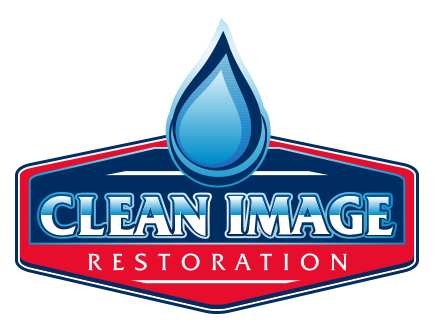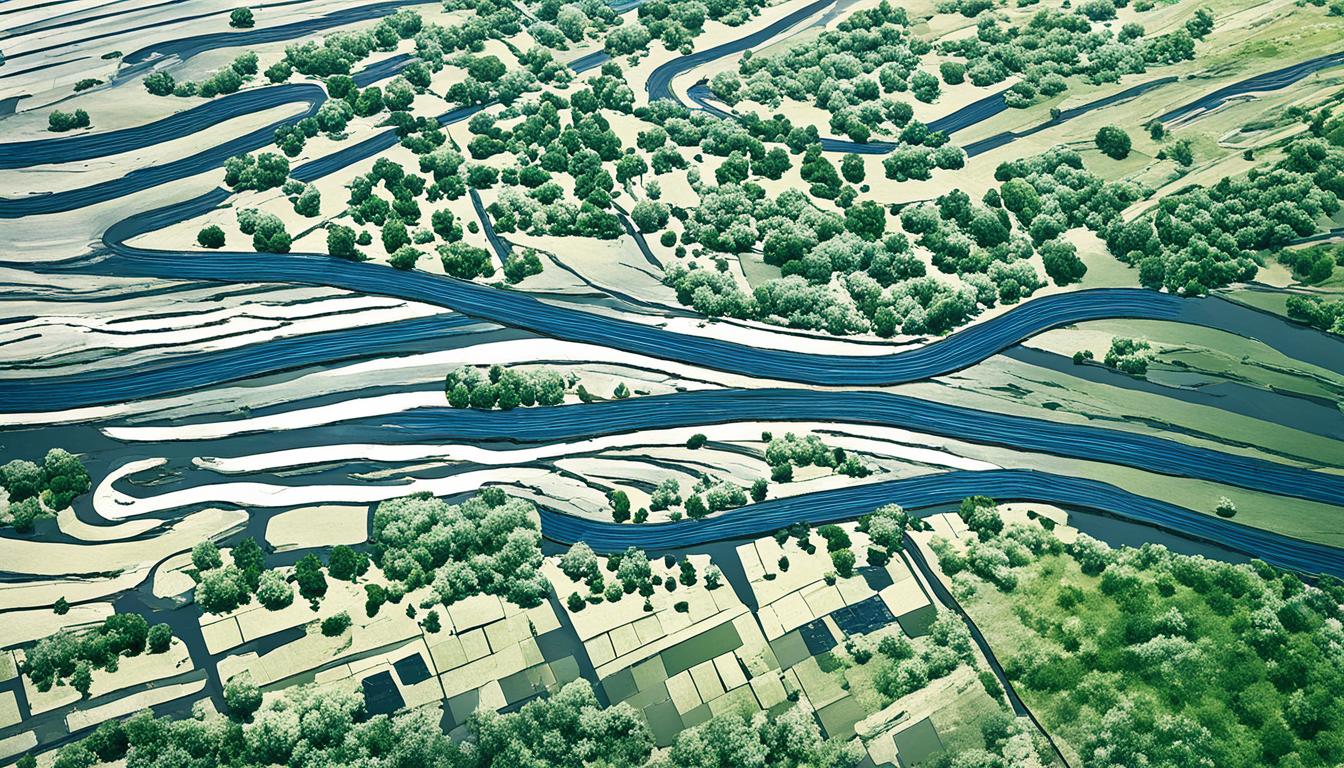When water overflows, it changes everything it touches. Floods come in many forms, each affecting us in different ways. They can be from rivers bursting, heavy rain, sudden flash floods, or even the sea. Knowing about these floods is important for staying safe from natural disasters.
River floods happen when rivers overflow. Rain floods come from heavy rains on hard ground, causing water to pool. Flash floods appear with little warning, and coastal floods strike with ocean might. Each type is different but poses severe risks.
Now, these floods are part of Earth’s water cycle. They can bring life or destruction. It’s vital to know what causes them to better protect ourselves. So, we ask not just what floods are but how to prepare for them.
Key Takeaways
- Learning about floods helps in making detailed plans to keep safe.
- Various causes of floods need different ways to predict and handle them.
- Each type of flood needs special steps to protect people and property.
- Understanding the risks of floods is key to reduce damage and save lives.
- Seeing how fast they can do harm highlights the need for quick alerts and good plans.
Understanding Floods: The Basics of Flooding
Floods come in many types and each can impact areas differently. Knowing this helps us see how a flood might affect an area. This is crucial for getting ready and staying safe before a flood comes.
Floods can be disastrous, hitting both people and nature hard. It’s key to learn about different flood types and what to do when they happen. This knowledge is our shield against flood dangers.
- Geographical vulnerabilities: Flood risks are everywhere, no matter if a place is near water or not. Both cities and countryside can be hit by floods.
- Varied flood types: Floods come in many forms, like slow pluvial or sudden flash floods. Each type has its own unique impact, from how it starts to the harm it causes.
- Direct and indirect consequences: Floods not only flood but can also destroy homes and businesses. Recovery after a flood can be a long and hard process for a community.
Planning and working together can lessen a flood’s impact. By being aware of flood signs, people and officials can act fast to reduce harm and start rebuilding sooner.
Fluvial Floods: The River’s Wrath
Fluvial flooding is when river floods or streams burst their banks. It happens after heavy rain or fast snowmelt overwhelms the rivers and streams. This causes water to spread into low-lying areas, damaging communities and ecosystems.
The impact of overflowing rivers depends on a few key factors. These include the length and strength of the rain, how wet the ground was before, and the shape of the land. In flat areas, water slowly rises and might stay for a while, harming homes and farms. But in hilly places, floods happen fast and can sweep away things. This causes severe damage to roads and buildings.
- Rainfall Duration and Intensity: Heavy or long rain boosts the river’s water levels, which may surpass the banks.
- Soil Moisture Saturation: When the ground is already wet, it can’t soak up more water. This makes flooding worse.
- Topography: The shape of the land near rivers decides how quickly and where water will spread. Flat lands generally see bigger floods, while hilly areas have fast but smaller floods.
Dealing with river floods requires good strategies and better structures in at-risk places. Knowing how these floods happen is key to getting ready. This way, the damage to homes and nature can be lessened when floods hit.
Pluvial Floods: When Surfaces Can’t Absorb Rainfall
Pluvial flooding, or surface water floods, happens when rain can’t soak into the ground. This is common in cities with more concrete and less green space. Rainfall overflows drainage systems, causing water to gather where it shouldn’t. This creates urban flooding, impacting daily life and possibly causing damage.
This flooding causes drainage system overload, especially troubling in big cities. It damages roads, buildings, and leads to increased bills for cleanup and repairs. Although it can sometimes give people a chance to leave, the water’s slow retreat can strain city services for a long time.
- Increased impervious surfaces leading to reduced natural infiltration
- Insufficient drainage capacity failing to channel the extensive water away
- Gradual landscape changes reducing natural water absorption
To fight pluvial floods, we must work on city planning and build better infrastructure. Making stormwater systems stronger, adding green roofs, and creating flood-resilient spaces are important. These steps help us deal with the problems caused by surface water floods.
Flash Floods: Sudden and Severe Water Deluge
Flash floods happen fast and are very powerful. They’re often caused by intense rainfall or when structures like dams break. They hit without much warning, turning roads into swift rivers that carry away everything.
These floods bring more than just water. They also carry debris, which adds to the damage. Cities are particularly vulnerable because paved areas can’t soak up the water. This quickly overloads drainage systems.
- Speed and intensity of the rainfall contribute to the severity of flash floods.
- The landscape and soil conditions profoundly affect how floodwaters behave, with urban areas facing increased vulnerability due to minimal natural absorption capacities.
Being ready for a flash flood is really important. It saves lives and protects property. Quick evacuation plans and knowing what to do are key. The floods move too fast for anyone to delay reacting.
Learning about flash floods helps us get ready. It makes us better at protecting our communities and buildings. Knowing and getting ready can turn a bad situation into one we can handle.
Coastal Floods: The Oceans’ Inundation
Coastal flooding is when high tides and storm surges mix with hurricanes. These events cause a lot of damage near the coast. The shape of the land along the coast can make flooding worse or better.
Storm surges are really damaging. They force seawater onto the land, wrecking homes and nature. How fast and how big they are depends on the storm and ocean floor shape.
- High tide flooding gets worse with storm surges. This causes major flooding along the coast.
- The land’s shape by the water decides how far storm surges can go. This affects how bad flooding gets in some places.
To lower flood damage, we need accurate warnings for people near the coast. Strong defenses and keeping natural barriers in place is key. Places hit often by floods use technology and nature together to stay safe.
Conclusion
The world’s unpredictable weather can lead to floods anytime. It’s crucial for everyone to understand these dangers and be ready. Every type of flood, be it a slow river rise or a sudden flash flood, brings its own risks. With better technology, we can now spot these disasters earlier. This helps us act fast and keep everyone safe.
With climate change, flood risks are growing. We must change how we prepare for and respond to these disasters. Making cities stronger and improving early warnings can lessen flood harm. Everyone must work together to get ready for floods. This will protect lives and our communities.
The key is to learn about floods and get ready for them. Knowing why floods happen and how to see the warning signs is important. With the right steps, we can protect ourselves from nature’s dangers. Teaching and preparing are the best ways to keep our communities safe from floods.






